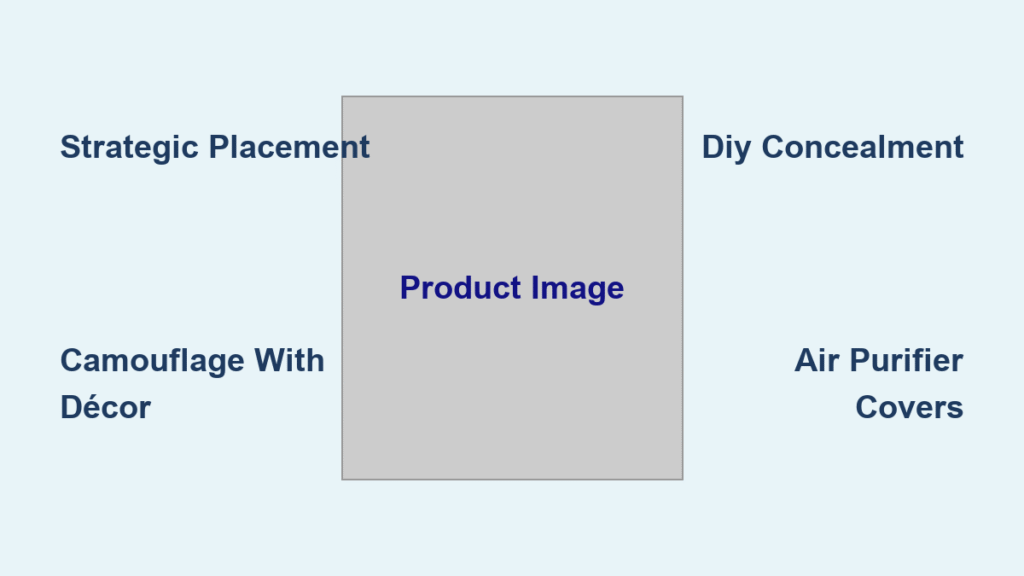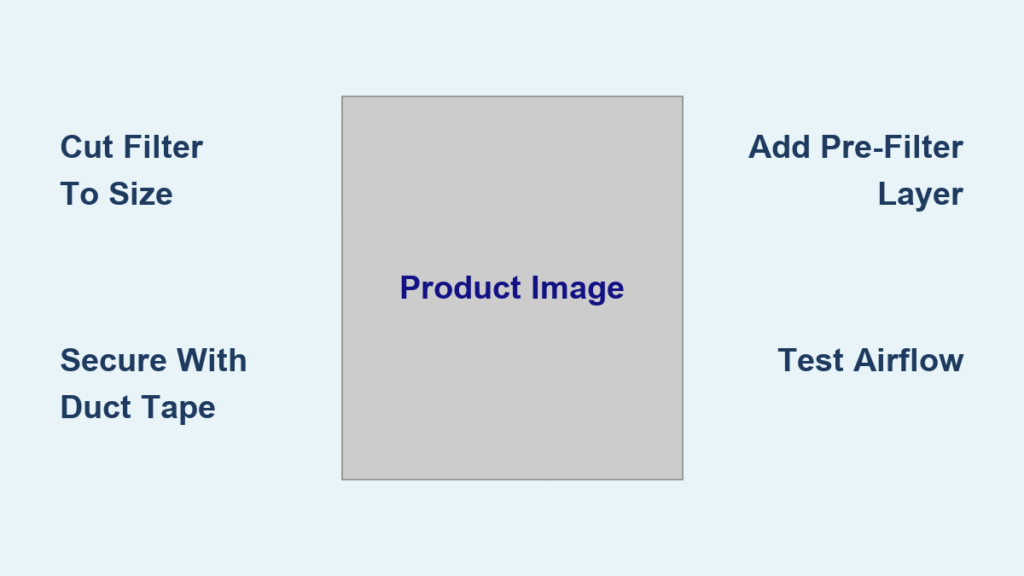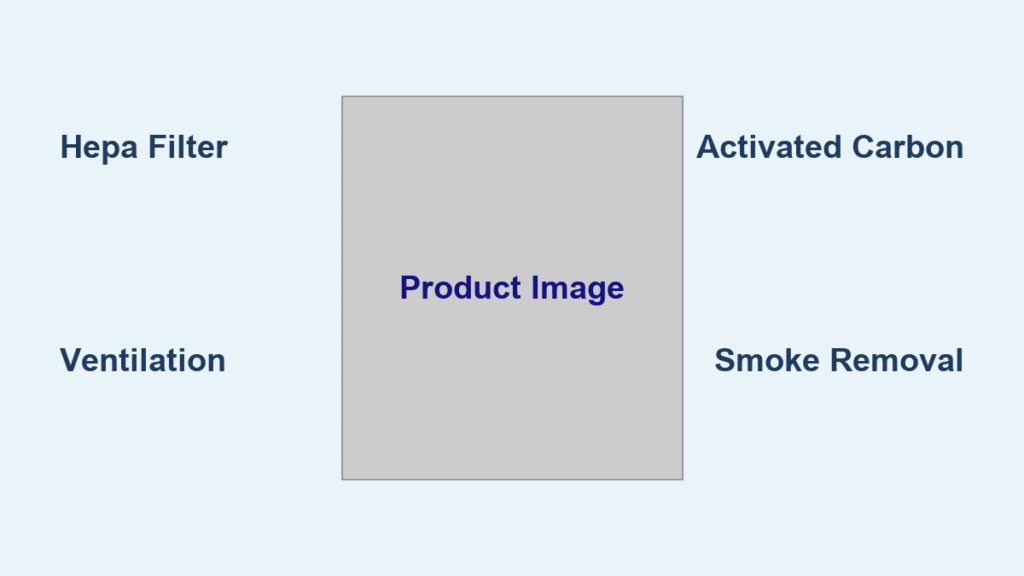That first raspy cough from your newborn during dry winter months can send any parent into panic mode. Newborns lose moisture faster than adults due to their underdeveloped skin barriers and rapid breathing rates, making proper humidity levels critical for their respiratory health and skin comfort. When indoor air drops below 30% humidity—a common occurrence with winter heating—you’re not just battling dry nasal passages; you’re risking compromised sleep quality and aggravated eczema flare-ups. This guide cuts through the confusion to deliver actionable steps for how to use a humidifier for newborn safety, transforming your nursery into a moisture-balanced sanctuary where your baby breathes easier and sleeps sounder.
Skip Warm Mist Models: Why Cool Mist Wins for Newborns
Ultrasonic cool mist humidifiers outperform other types for newborn safety with near-silent operation—critical when your baby finally drifts off. These units use high-frequency vibrations to create invisible moisture particles without heating water, eliminating scalding risks entirely. Unlike warm mist alternatives that boil water, ultrasonic models won’t spew boiling liquid if accidentally knocked over during middle-of-the-night diaper changes.
Impeller humidifiers offer a viable alternative with their rotating disk mechanism. While slightly noisier, this gentle hum often doubles as soothing white noise that masks household disturbances. Both cool mist varieties avoid the burn hazards inherent in warm mist units, where a single tip-over could flood your nursery with boiling water. The American Academy of Pediatrics explicitly discourages warm mist humidifiers in baby rooms due to these irreversible risks.
Match Capacity to Your Nursery Size

Oversized units create damp breeding grounds for mold within 48 hours. A humidifier rated for 500 square feet in a standard 12×12 nursery (144 sq ft) will overshoot the ideal 30-50% humidity range, triggering condensation on windows and walls. Conversely, an undersized unit struggles to maintain moisture levels, leaving your newborn vulnerable to dry air complications.
Use this sizing cheat sheet:
– Tiny nurseries (<150 sq ft): 0.5-gallon tank capacity
– Standard nurseries (150-300 sq ft): 1-gallon capacity
– Large nurseries (>300 sq ft): 1.5+ gallon capacity with automatic shut-off
Prioritize models with built-in hygrometers that display real-time humidity levels. Units without this feature require separate hygrometer purchases, adding clutter to your changing station. Always verify coverage specs match your actual room dimensions—not manufacturer “ideal conditions” claims.
Position 3+ Feet from Crib on Elevated Surface

Direct mist exposure causes respiratory distress even in healthy newborns. Place your humidifier 3-6 feet from the crib on a dresser or nightstand at least 2 feet off the ground. This elevation allows moisture to disperse evenly rather than pooling near your baby’s breathing zone. Never position the unit where mist blows directly onto your infant—this creates localized over-humidification that can worsen congestion.
Secure cords with zip ties behind furniture legs to prevent strangulation hazards. Maintain 12 inches of clearance from walls to avoid moisture damage to paint and baseboards. Crucially, ensure the unit sits beyond your baby’s reach even when they stand in the crib—most tipping incidents occur during early mobility stages.
Maintain 40-45% Humidity Year-Round
Over-humidification mimics cold symptoms with increased nasal congestion and persistent coughing. Use a standalone digital hygrometer (not just the unit’s built-in sensor) to verify levels stay between 40-45%—the sweet spot for newborn respiratory comfort. Check readings each morning after overnight operation; condensation on windows indicates dangerous over-humidification requiring immediate adjustment.
Winter requires aggressive monitoring as heating systems drop indoor humidity below 20%. Run your humidifier continuously on low settings during sleep periods but reduce usage in summer when natural humidity rises. If your hygrometer reads above 50%, shut off the unit for 2-3 hours and run a fan to circulate air before restarting.
Distilled Water Prevents Invisible Hazards
Tap water mineral dust enters tiny lungs with every breath. Cool mist humidifiers aerosolize tap water minerals into white dust that settles on crib surfaces and respiratory tissue. These microscopic particles irritate developing airways and worsen congestion—especially dangerous for newborns with immature immune systems.
Distilled water eliminates this risk by removing 99.9% of minerals and impurities. Though costing $0.50-$1 per gallon versus tap water’s pennies, it prevents respiratory irritation and extends your humidifier’s lifespan by reducing internal buildup. When distilled water isn’t feasible, install a demineralization cartridge as a budget alternative—never skip this step.
Daily Tank Emptying Prevents Bacterial Blooms
Stagnant water breeds pathogens in 24 hours—faster than you might think. Bacteria and mold colonies establish in unused tanks overnight, then disperse directly into your newborn’s breathing space during operation. This hidden contamination causes unexplained congestion spikes and respiratory infections that mimic common colds.
Your non-negotiable daily routine:
1. Unplug unit before handling
2. Empty all remaining water—even if tank appears full
3. Rinse thoroughly with warm water
4. Dry interior with microfiber cloth
5. Refill with fresh distilled water
Skipping this five-minute step during newborn sleep deprivation cycles risks serious health consequences. Set phone reminders until the habit sticks.
Weekly Vinegar Soaks Kill Hidden Buildup
Mineral deposits harbor bacteria even in clean-looking tanks. Weekly deep cleaning with white vinegar dissolves invisible scale while neutralizing pathogens—no harsh chemicals needed near your baby. The 30-minute soak time fits perfectly into your weekly laundry routine.
Follow this foolproof weekly process:
1. Disassemble all removable parts
2. Soak in 50/50 white vinegar-water solution
3. Gently scrub crevices with soft toothbrush
4. Rinse three times with clean water
5. Air-dry completely before reassembly
Replace evaporative wicks every 1-3 months per manufacturer guidelines. Mark replacement dates on your calendar—saturated filters reduce output by 40% and become bacterial breeding grounds.
Recognize Dangerous Over-Humidification Signs
Window condensation means mold growth is already occurring in wall cavities. Visible moisture on nursery windows signals humidity levels exceeding 60%—a red flag for dust mites and mold that trigger asthma attacks. Immediately reduce usage duration and run exhaust fans to lower levels.
Musty odors require emergency action—this indicates active mold colonization inside walls or ducts. Shut off the humidifier, increase ventilation, and consult an indoor air quality specialist. Never ignore persistent coughing that worsens only in the nursery; it could signal mold exposure rather than a simple cold.
Never Add Essential Oils or Medicated Pads
“Baby-safe” essential oils aren’t safe for infants under 6 months. Newborn lungs can’t metabolize concentrated plant compounds, leading to respiratory distress and chemical pneumonia. The FDA has issued warnings against all essential oil use in infant humidifiers regardless of marketing claims.
VapoPads require strict dosing limits even with pediatrician approval: Maximum 2 pads in 24 hours for babies under 10 pounds, 6 pads for 10-22 pound infants. For newborns under 8 weeks, skip additives entirely—plain distilled water provides all the respiratory relief needed.
Pediatrician Consultation Before First Use
Babies with eczema need precise humidity control—too low dries skin, too high triggers flare-ups. Discuss your humidifier plan during your newborn’s 2-week checkup, especially if they have respiratory conditions like bronchiolitis. Your pediatrician may recommend specific target levels (e.g., 45% for eczema management).
Seek immediate medical advice if your newborn develops increased wheezing, skin rashes near the humidifier, or congestion that worsens despite proper use. These could indicate mold sensitivity or inappropriate humidity levels requiring professional intervention.
Nightly Safety Checklist for Newborns
Before bedtime every night:
– [ ] Empty and rinse tank with distilled water
– [ ] Verify hygrometer reads 40-45% humidity
– [ ] Confirm 3+ feet distance from crib
– [ ] Check for window condensation
– [ ] Ensure cords are secured and out of reach
Weekly maintenance reminder:
– [ ] Complete vinegar deep clean
– [ ] Replace filters/wicks
– [ ] Inspect for mold in tank crevices
– [ ] Test automatic shut-off function
– [ ] Adjust seasonal settings
Consistent humidifier use creates the ideal nursery environment where your newborn’s delicate respiratory system thrives. Remember that daily tank emptying and distilled water aren’t optional extras—they’re non-negotiable safety protocols. When you master how to use a humidifier for newborn care with these precise steps, you’ll notice calmer nights, clearer breathing, and fewer skin irritations. Always prioritize pediatrician guidance over online advice, as each baby’s needs vary based on health conditions and environmental factors. The peace of mind from knowing you’ve created a perfectly balanced breathing space? That’s priceless.





